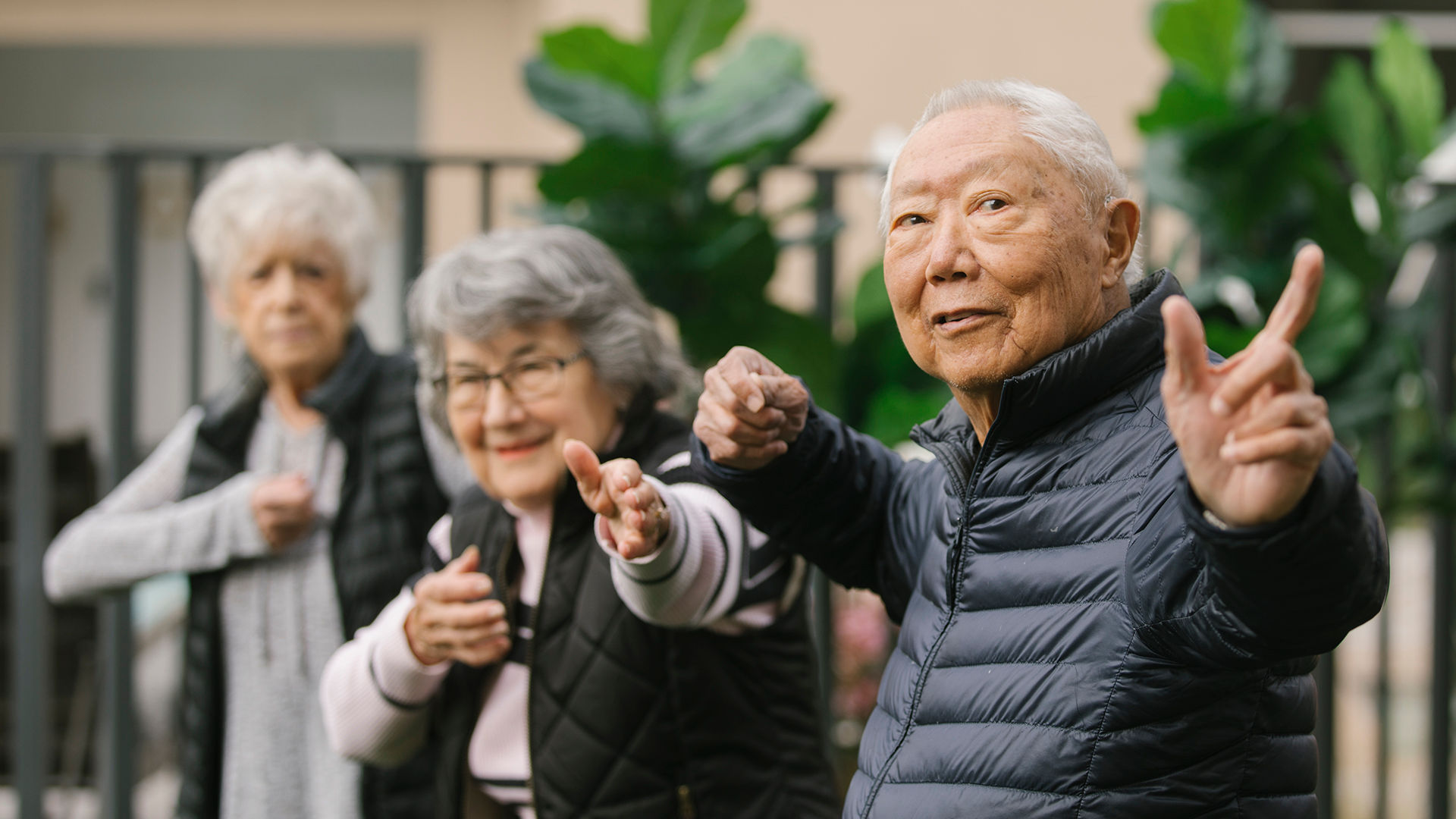This blog was written by the balance experts at Zibrio.
Balance issues affect nearly one-third of older adults, making fall prevention a top health priority. While standard physical exercises help, emerging science reveals that challenging your brain while moving your body – a practice called dual-tasking – may be the key to maintaining stability.
But is it really possible to strengthen your balance through cognitive exercise? Let’s dive into what science tells us about boosting balance through brain power.
What is dual-tasking and why does it matter?
Dual-tasking refers to performing a physical activity while simultaneously engaging in a cognitive task – dancing while focusing on the music and steps, for example, or walking through a store while making a list in your head.
In younger individuals, the brain manages multiple tasks efficiently, but as we age, the ability to juggle cognitive and physical demands can decline. This can lead to an increased risk of falls, particularly when navigating busy environments or responding to unexpected events.
Training the brain and body together helps strengthen neural pathways that coordinate movement and thought processes, making everyday movements safer.
Examples of dual-tasking exercises for older adults include:
- Walking while reciting the alphabet backward
- Standing on one leg while naming items in a specific category (fruits, countries, etc.)
- Stepping over obstacles while counting by 3s
- Marching in place while solving simple math problems
Benefits of dual-tasking for seniors
In addition to physical stability, studies show that dual-task training can enhance several aspects of functioning for older adults:
- Improved reaction time: Better responses to sudden environmental changes, such as stepping onto an uneven surface
- Enhanced postural control: Greater ability to maintain an upright position, reducing the risk of falls
- Increased cognitive flexibility: More efficient switching between tasks and better mental agility
- Better gait and walking stability: More controlled and confident movement, even when multi-tasking
- Greater independence: Improved ability to manage daily activities that require both thinking and moving
- Reduced fall risk: Studies show dual-tasking exercises can decrease fall incidents in seniors
- Brain health: Cognitive challenges combined with physical activity may help maintain cognitive function
Researchers have found that older adults who engage in dual-task training show measurable improvements in balance compared to those who perform physical or cognitive tasks separately. By including these different modes of exercise in your routine, you can build resilience and maintain independence longer.
What to expect when you start training
If you’re new to dual-tasking exercises, it’s important to start with simple activities and gradually increase difficulty as your skills improve. Here are some common experiences that you can expect.
- It may feel challenging. Many people find that adding a cognitive task to a balance exercise initially makes the activity harder. This is completely normal. The brain needs time to adapt to processing multiple inputs simultaneously.
- You might feel mentally and physically tired. Engaging both the brain and body at the same time requires extra energy. You may find that short sessions tire you out initially, but as with any training, endurance improves over time.
- Progress happens gradually. Like any fitness routine, improvement takes time. With consistent practice, you’ll notice that tasks become easier, and your balance and mental agility improve.
- Some tasks are easier than others. You may find that counting backward while walking is more difficult than reciting a poem while standing on one leg. Everyone has different strengths, so tailor exercises to your needs and progress at your own pace.
The 5 best cognitive exercises for seniors to improve balance
When looking to improve balance using cognitive challenges, consider some of the common exercises from this list – you might just see an activity you’ve always wanted to try.
- Tai chi: This ancient practice combines flowing movements with mental focus and has been shown to significantly improve balance in older adults
- Dance classes: Learning choreography engages both mind and body
- Obstacle courses: Setting up simple obstacles to navigate while performing cognitive tasks
- Balance board activities: Using balance equipment while solving puzzles or answering questions
- Yoga with mindfulness: Combining poses with breathing awareness and mental focus
Does dual-tasking require professional supervision?
While dual-tasking exercises can be performed independently, some individuals benefit from guidance by a physical therapist or exercise specialist.
You may want to work with a professional if you:
- Have a history of falls or significant balance issues
- Experience dizziness, vertigo or other medical conditions affecting coordination
- Feel uncertain about performing exercises safely on your own
- Have had your balance assessed as poor
If you’re unsure about your ability to perform these tasks safely, consulting a professional can provide peace of mind and personalized recommendations for senior exercises to improve balance.
Try balance-boosting activities at Atria
At Atria, our wellness programs include cognitive and physical training, and select communities offer 60-second balance assessments using the Zibrio scale. By tracking your balance over time, you can identify patterns, make adjustments and take proactive steps to reduce fall risk.
Schedule a tour at one of Atria’s participating communities and see where your balance stands.
Try the Zibrio scale at these communities:
Southern California
Long Island, New York
You might also like
Want to learn more about life at Atria Senior Living?


